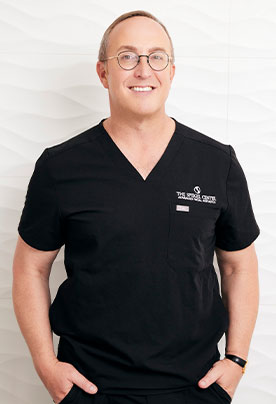
'Ozempic face caused by weight loss' is a buzz term for the foreseeable future due to the rise in the use of semaglutides like Ozempic, Wegovy, or Zepbound. These GLP-1 agonists are medications used for weight management. This phenomenon refers to the changes in facial sagging appearance that individuals may experience because of significant weight loss while taking Ozempic and other weight loss medications.
The concept of 'Ozempic face caused by weight loss' can be traced back to the development of Ozempic as a medication for weight management. Ozempic, which contains the active ingredient semaglutide, was initially approved by the FDA for the treatment of type 2 diabetes. It was later found to be effective in promoting weight loss in individuals with or without diabetes. As more people began using Ozempic for weight management, reports of changes in facial appearance started to surface, such as sagging and drooping leading to the term 'Ozempic face’.
The impact of 'Ozempic face caused by weight loss' can be both positive and negative. On the positive side, individuals who have lost weight with the help of Ozempic, Wegovy or Zepbound may experience improved self-esteem and confidence as they achieve their weight loss goals, living a healthier longer life. However, some may also face challenges such as adjusting to changes in their appearance and dealing with societal perceptions of beauty and attractiveness. It is essential to consider both the physical and psychological impact of 'Ozempic face caused by weight loss' on individuals and to address these accordingly.
Botulinum (A.K.A Botox®, Dysport®, Xeomin®, Jeuveau® and Daxxify®) and fillers like Prollenium® Versa, Restylane®, Radiesse® and Sculptra® have become 'first responders' to the Ozempic face phenomenon in their ability to enhance facial aesthetics and potentially boost confidence in individuals. Botox®, a neurotoxin derived from the bacterium Clostridium botulinum, was first used in the 1970s to treat medical conditions such as muscle spasms and facial tics. It was not until the 1990s that Botox® and its sister products Dysport®, Xeomin®, Jeuveau®, and Daxxify® gained popularity as a cosmetic treatment for reducing wrinkles and fine lines on the face. Similarly, dermal fillers, which are substances injected into the skin to add volume and smooth out wrinkles, lifting sagging skin and undoing facial concavities have gained widespread use in the early 2000s for cosmetic purposes. This combination can help individuals achieve a more youthful and rejuvenated appearance, leading to increased confidence and self-esteem.
Despite the positive impact of Botox and fillers on Ozempic face, there are also negative aspects to consider. Some individuals may experience side effects such as bruising, swelling, or asymmetry after undergoing these treatments. There is also a risk of overuse or misuse of Botox and fillers, leading to unnatural or exaggerated facial features.
In conclusion, the use of Botox and fillers to help Ozempic face has become a popular and effective method for enhancing facial aesthetics. While there are key figures who have contributed to the field and positive outcomes to consider, it is essential to weigh the potential risks and negative aspects of these treatments. As the field continues to evolve, it will be important to prioritize safety and ethical practices to ensure optimal results for individuals seeking cosmetic enhancement. Ultimately, the goal should be to support individuals in achieving their weight loss goals while promoting self-acceptance and a positive body and facial image. At The Spiegel Center our team of doctors, led by Dr. Jeffrey Spiegel, have been in the forefront of facial aesthetics in helping individuals tightening and rejuvenating their skin as well as replenishing lost volume both surgically and non-surgically. We are here to help you on your journey.





